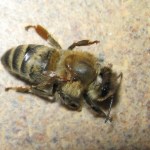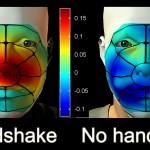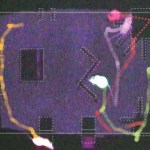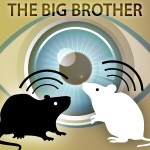social behavior
Why does infection with bacteria or viruses make you feel sick? Prof. Guy Shakhar and Dr. Keren Shakhar have proposed that your symptoms are not just a byproduct of your body’s attempt to get rid of the infection. It is your genes’ way of ensuring they are passed down. The long and short of their argument is that the malaise, loss of appetite and lethargy are all ways of isolating you from your social group – so that your kin, who carry many of your genes, are not infected as well.
That means we share an evolutionary adaptation with such organisms as bees that go off to die far from the hive…
It is a mystery no more: A physical model can explain how a bunch of ants are able, with no visible leader (or highly-developed brains, for that matter) to drag that oversized cake crumb or leaf all the way across your floor to their nest. It turns out that there are, indeed, leaders, of a sort. Those ants you see surrounding the prize being hauled are switching places with other ants that have been scouting out the directions to the nest. The new ants then direct the collective movement, at least for a moment or so until they begin to lose their sense of direction and newer ants take over.…
Today's guest blogger is Idan Frumin, a student in the group of Prof. Noam Sobel in the Neurobiology Department. Their research on the transmission of odor compounds while shaking hands appears today in eLife.
It all started one day after lunch, sometime back in 2011. We sat in the lab’s living room (Yeah, we have a living room. And a bedroom. And a blind pet cat. But that’s a different story), when Noam asked – ever wonder why people shake hands?
– To show you don’t have a saber up your sleeve – I immediately retorted.
– But that seems odd, doesn’t it? After all, we’re not in the…
What effect does a constant stream of engaging stimuli have on our relationships? On our social structure as a whole? What percentage of our actions is influenced by others, and how does this translate, at some point, into group behavior?
Neurobiologists Prof. Alon Chen and Dr. Elad Schneidman of the Weizmann Institute and their team members have been using mice to investigate these questions. Chen and Schneidman approach the group as a network composed of the joint behavior patterns of mice that had had their fur dyed in bright, glow-in-the-dark colors. Among other things, this enables the…
Take a bunch of peculiar individuals, put them all together in one setting; film their every move, every second of the day. Sound familiar? Dr. Tali Kimchi is explicit about the resemblance of her experiments to a well-known reality TV show. The difference, of course, is that Kimchi’s subjects are mice. She places large groups of animals in a common pen in her lab, which is fitted out with video cameras, infrared lighting for nighttime filming and electronics to continuously record information from the ID chips implanted in each mouse. And while no one can deny that our enjoyment at seeing…
tags: researchblogging.org, Brown paper wasp, Polistes fuscatus, hymenoptera, evolution, eusociality, social behavior
Brown paper wasp , Polistes fuscatus.
Fairport, New York, USA. 2003.
Many thanks to Alex Wild for sharing his amazing images here.
Thanks to Elizabeth Tibbetts for the species identification.
[larger view]
Eusociality, or "true social behavior", is the most extreme form of cooperative sociality known. Due to its seemingly altruistic nature, eusociality has provided many interesting challenges for evolutionary theory. Eusociality, as exemplified by ants, bees and wasps, is…
tags: researchblogging.org, Seychelles warbler, Acrocephalus sechellensis, birds, evolution, social behavior, helping behavior, grandmothers
Seychelles warbler, Acrocephalus sechellensis.
Image: J. Komdeur.
When talking about evolution, some people have wondered aloud about why grandmothers exist in human society since they clearly are no longer able to reproduce. However, these people are conveniently overlooking the fact that grandmothers perform a valuable service; they help their relatives, often their own children, raise their offspring -- offspring that are genetically related to…
tags: researchblogging.org, social behavior, evolution, Psittacosaurus, ornithischian dinosaur
Triceratops.
Image: Dinosaur Collector
Triceratops are among the most recognizable dinosaurs because of their distinct appearance. They had a large and elaborate bony shield around the back of their head, horns that jut out from the top of their head and nose like spears, and bony knobs on their cheeks. Because these large structures are energetically expensive to grow, they had to serve a purpose and this purpose was likely the establishment of social hierarchies. Thus, these ornaments provide…
tags: spider, giant spider web,arachnid, social behavior
Lake Tawokoni State Park rangers (l-r) Mike McCord and Freddie Gowin continue to monitor a giant communal spider web at the park Tuesday, August 29, 2007. Officials at Lake Tawokoni State Park have been watching the growth of a giant communal spider web that has formed in the park over the past several weeks. The giant spider webs are rare for Texas.
Image: Tom Pennington. [Scary wallpaper size]
Have you heard about the spiders that spun a web that is the size of Texas? Well, actually, the web is only the size of two football…



